Fossil Folklore
A long time ago people didn't understand how fossils were formed. What were these strange shaped things, and how were they made ? So tales and myths started to circulate about them.
Here is just a little of the folklore of fossils.
Ammonites
In Whitby, in the 7th century, St. Hilda wanted to build an abbey but the area was full of snakes. She cut their heads off, they turned to stone and she threw them off the cliff. So ammonite fossils became known as snakestones. Dactylioceras and Hildoceras were the most well¬known species of ammonite in Whitby.
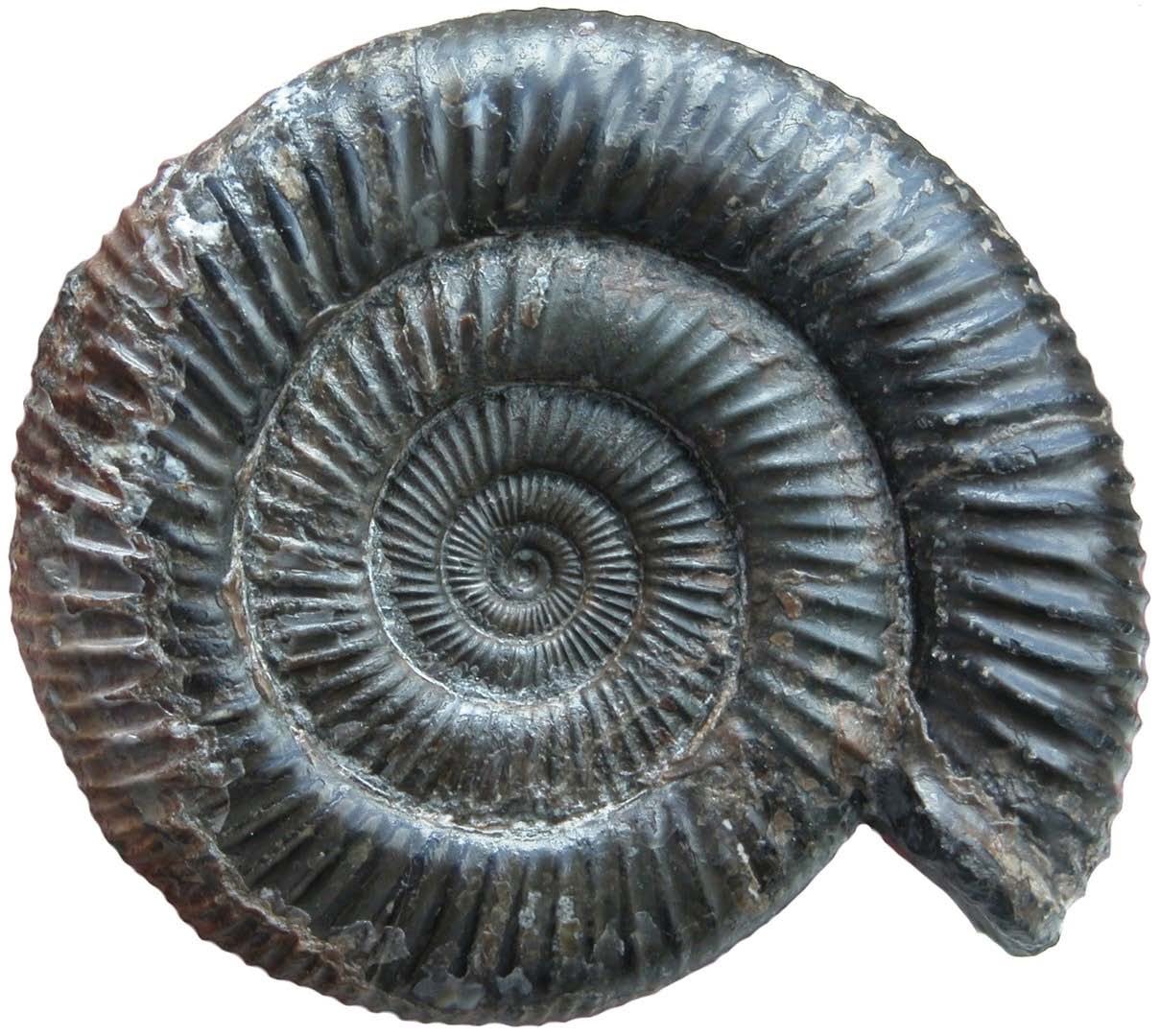
AmmoniteDactylioceras
The snakestone legend was very strong in Whitby and so ammonites became part of the coat of arms. Three ammonites ( including their heads ) are shown on the picture left. Whiby Town FC also features ammonites on its badge. Tradesmen’s tokens from the 1660’s also had images of snakestones on them.
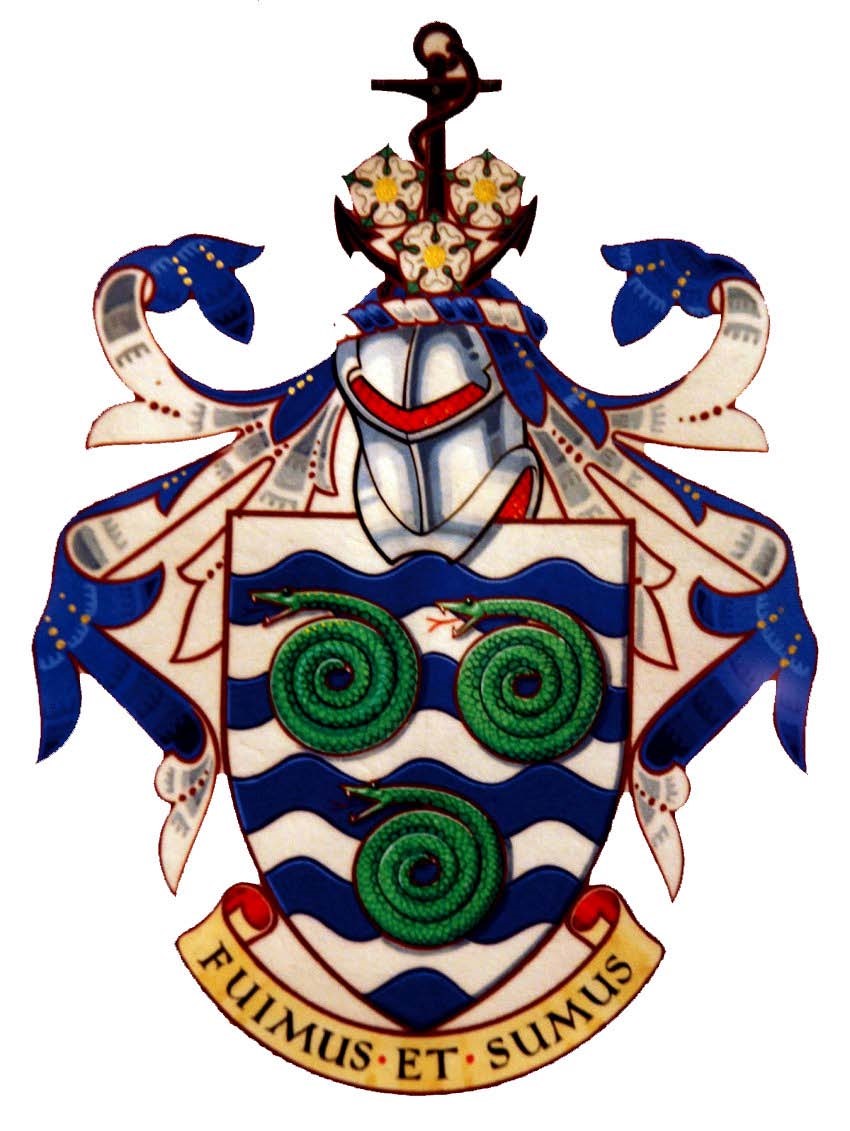
Sea Urchin
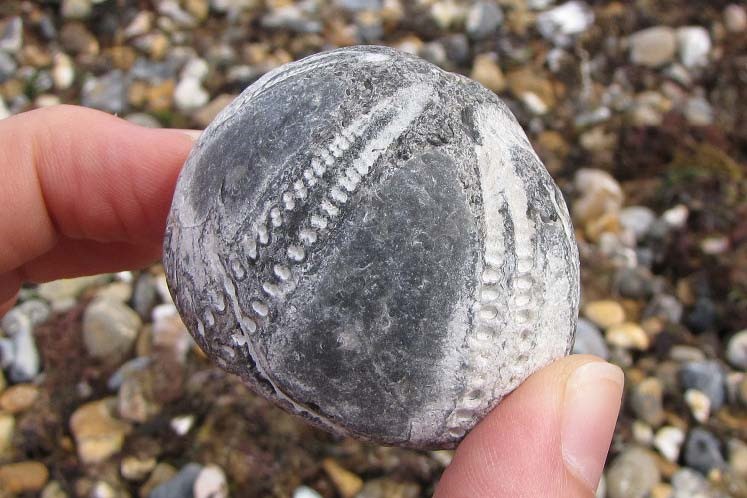
You can find Sea Urchins alive today so it is amazing that their fossils went unrecognised in the past.It was possibly due to the fact that their spines fall off when they die. This leaves a ball with a five pointed star on it. The oldest folklore tale was metioned by Pliny the Elder who called them snake eggs. Years ago in Britain people said they were made from the froth produced by snakes and under certain conditions could become a powerful magical artefact that could be effective against poisoning. Other uses were as an aid to making bread rise and as a defence against lightening. English folklore describes the internal moulds of fossil sea urchins as ‘Shepherd’s crowns’. Sea urchins have a characteristic cone shape. They also have five decorative ridges that meet at the top like the ribs of a crown. Shepherds may have come across petrified sea urchins while car¬ing for their sheep on the chalky downlands of southern England. In Suffolk people call fossil sea urchins ‘Fairy loaves’ because of their shape. This inspired people to placed them by the hearth as charms.
Gryphaea
The bivalve Gryphaea was nicknamed the Devil's Toenail because its robust curved shape, marked with prominent growth bands, seemingly resembles a thick toenail. Orthodox wisdom heralded that these strange objects were made as the Devil clipped his toenails, and were believed to cure arthritic joint pains. In Scunthorpe they named it Milner’s Thumb. They were burnt and beaten into powder which they used to rub into a horse’s sore back. This cured it in two to three days.
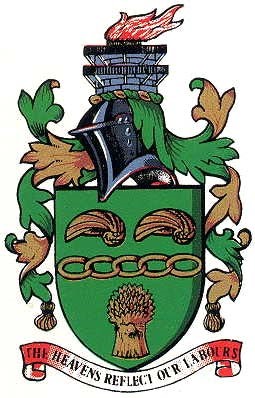
The Borough of Scunthorpe’s coat of arms which was adopted in 1936 features two Gryphaea on the shield.
Crinoids
Their disc¬shaped columnals which make up their segmented stems are often found in abundance, and it is around these that folklore has developed. The folklore name of St. Cuthbert's Beads originated from a belief that the monk St. Cuthbert (634¬687AD), who became Bishop of Lindisfarne, carved the disc¬shaped beads on a stormy night so they could be found on the beach the next morning. Crinoids have also been known as Star Stones because of their pentagonal shaped columnals. Star Stones were thought to have come to earth from the heavens. It was believed the star shaped columnals were generated in the clouds and sent to earth in times of thunder and violent showers.
Belemnites
The most widespread belief about belemnites is that they are the earthly remains of lightning strikes. Called thunderbolts, thunder¬stones, and thunder¬arrows, they were thought to have protective powers against lightning. In parts of the Netherlands, belemnites were placed on the roofs of houses to stave off strikes before the invention of the more effective lightning rod. In Lithuania a traditional magic charm reveals the method to treat a snakebite, by rubbing a belemnite over a wound. In parts of western Scotland they were known as Bat Stones and were put in water fed to horses to cure them from distemper. In Southern England it was widely believed that belemnites could be used to cure rheumatism and sore eyes in both men and horses, the treatment of which was to grind the fossil into powder and pro¬duce a dust that would be blown into the eyes. In some parts of England belemnites were known as Devil's Fingers or St. Peter's Fingers. In Scandinavia belemnites were also regarded as belonging to elves, pixies or gnomes and in some areas are still known as vatteljus, literally gnomes' candles in Swedish. Another popular belief throughout Europe was that belemnites were the points of pixie¬arrows and were sometimes referred to as elf¬bolts. In Dorset in England local fairies went by the name of colpexies and belemnites were known as colpexies fingers.
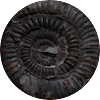 Back to main Fossil Furlongs Page
Back to main Fossil Furlongs Page